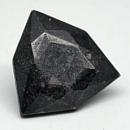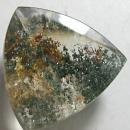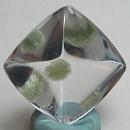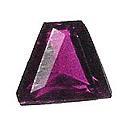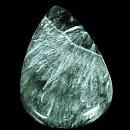|
|
||||||||||||||||
|
||||||||||||||||
|
||||||
|
|
|
|
Chlorite
Group
|
|
|
|
| | |
| Discovery year unknown; IMA status: Not Valid (not an individual mineral species; a group name) | |||
|
|
|||
|
Chemistry |
|
|
| |
|
The general formula may be stated
as: |
|
Classification |
|
|
| |
|
Silicates (Germanates) | |
|
8/H.23-20 | |
|
|
9 : SILICATES (Germanates)
|
|
Related to: |
Chlorite Group. |
|
Members of Group: |
Chlorite Group: Baileychlore, Borocookeite, Chamosite, Clinochlore, Cookeite, Corundophilite, Donbassite, Franklinfurnaceite, Nimite, Orthochamosite, Pennantite, Sudoite |
|
Varieties: |
Brunsvigite, Prasolite |
|
Synonyms: |
Chlorite, Oxychlorite, Viridite |
|
|
|
|
Crystal Data |
|
|
|
|
|
|
|
|
Occurances |
|
|
|
|
|
Geological Setting: |
Hydrothermal alteration product of amphibole, pyroxene and biotite. |
|
View mineral photos: | |
|
|
|
|
More Information |
|
|
|
|
|
| |
|
|
|
|
Chlorites are often known to gem
collectors as green inclusions
in Quartz and are
particularly interesting when they form as a coating on a crystal early
in its development.
As the crystal later grows larger, ie. out and around the
Chlorite coating, the effect produces a phantomed crystal.
The interior "crystal" is often indistinct or ghostly and thus the
name phantom.
|
|
|
|
|
|
|
|
|
Chlorite Group gems |
|
|
|
|
|
|
|
|
|
||||
|
|
|
|
|
|
|
||||
| Chamosite |
|
Chlorite (incl.) |
|
Cookeite (incl.) |
|
Kämmererite | ||||
|
|
|
|
|
|
|
|
||||
|
|
|
|
|
|
|||||
| Seraphinite |
|
|
|
|
||||||
|
|
|
|
|
|
|
|
